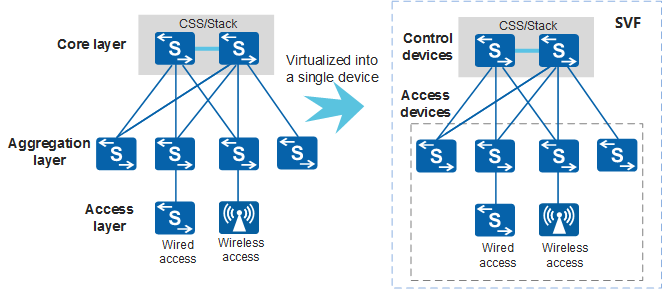Overview of SVF
Definition
Super Virtual Fabric (SVF) technology virtualizes network devices at multiple layers into a single logical device and allows control devices to manage and configure access devices. This technology simplifies management and configuration, as shown in Figure 1.
Purpose
Access devices of a traditional campus network have the following characteristics:
A large number of access devices are distributed sparsely.
Services are simple and configurations on different access devices are similar.
The trend towards wired and wireless convergence grows.
Using traditional methods to configure and manage the campus network is laborious and complicates the configuration and management of access devices. SVF technology simplifies management and configuration of access devices.
Compared with traditional configuration and management methods, SVF has the following advantages:
Unified device management
SVF virtualizes control and access devices into one logical device and allows control devices to manage and configure access devices.
Unified configuration
SVF implements batch configuration of access devices based on profiles, removing the need to configure access devices one by one.
Unified user management
SVF manages wired and wireless access users in a unified manner.
